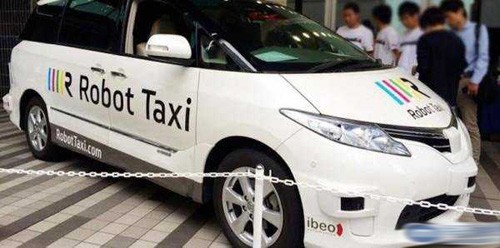What is the function of a Japanese robot taxi? According to Robot Taxi, the Robot Taxi autopilot is equipped with GPS, millimeter wave radar, stereo vision camera and image analysis technology. This model is fully popularized in Japan in 2020.
Opened in Tokyo, Japan Robot Taxi (taxi robot) the company is redoubling its efforts to prepare for the hope that early next year a taxi driver can automatically bring the Japanese road. On October 8th, they will invite residents of Fujisawa City, Kanagawa Prefecture, Japan to experience the service in advance. Fifty people are currently preparing to participate in this experiment.

According to Robot Taxi, these new taxis will take the experience to their default supermarket, which is 3 kilometers from their home. For safety reasons, the company will have a flight attendant on the driver's seat. Robot Taxi will equip these self-driving vehicles with GPS, millimeter-wave radar, stereo vision cameras and image analysis technology.
The Kanagawa Prefectural Government highly praised the pioneering spirit of Robot Taxi. Robot Taxi's self-driving cars have been tested on the highway before carrying out manned experiments. Therefore, Robot Taxi's experiment in Kanagawa Prefecture was the first time that the company's self-driving taxi was uploaded on the local road. Japanese government official Yuji Kuroiwa said: "This time, the autopilot taxi experiment will be carried out on the actual city streets." He also said that Kanagawa Prefecture will become a pioneer in the realization of future autonomous driving technology.
Lead-acid is the oldest rechargeable Battery in existence. Invented by the French physician Gaston Planté in 1859, lead-acid was the first rechargeable battery for commercial use. 150 years later, we still have no cost-effective alternatives for cars, wheelchairs, scooters, golf carts and UPS systems. The lead-acid battery has retained a market share in applications where newer battery chemistries would either be too expensive.
Lead-acid does not lend itself to fast charging. Typical charge time is 8 to 16 hours. A periodic fully saturated charge is essential to prevent sulfation and the battery must always be stored in a charged state. Leaving the battery in a discharged condition causes sulfation and a recharge may not be possible.
Finding the ideal charge voltage limit is critical. A high voltage (above 2.40V/cell) produces good battery performance but shortens the service life due to grid corrosion on the positive plate. A low voltage limit is subject to sulfation on the negative plate. Leaving the battery on float charge for a prolonged time does not cause damage.
Vrla Ev Batteries,Electric Bicycle Vrla Battery,Motorcycle Vrla Battery,Rechargeable Vrla Ups Battery
Starlight Power Industrial Company Limited , https://www.starlite-power.com